Willful Ignorance, noun.
- (idiomatic, law) A decision in bad faith to avoid becoming informed about something so as to avoid having to make undesirable decisions that such information might prompt.
In 2005 I moved cross-country to work with a Classical Dressage trainer. Maybe “work with” is the wrong term; I was a working student who quickly preferred to avoid direct instruction with this particular person.
It was several months after I arrived. The living conditions for the horses were sub-par in my opinion and experience. But it was what it was – too many horses living in tight quarters near a major metropolis.
Of particular concern to me were the horse's hooves. There were three different farriers managing the hoof care of roughly twenty horses, give or take a few as boarders came and went. The differences in their trimming and shoeing styles were drastic if you looked only at the most superficial evidence; like their personality or speed of work.
The results though were very similar. Every horse in their care had some kind of hoof issue being tended to and every problem was becoming worse the more attention was spent on it, not better.
There were contracted heels, hoof wall cracks to the coronary band, severe thrush, abscesses and “unexplained” lameness. Every horse in the barn had a hoof issue, except one – mine.
What was different between those horses and mine?
My horse was barefoot, but there were other barefoot horses in the barn that were suffering from hoof ailments so it wasn't a matter of shod vs. barefoot alone.
I was driving with this trainer one day and asked him about the hoof issues. I asked him about the failed efforts by the farriers he employed. I asked him if he'd considered learning more about hooves and trimming so he could help improve the lives of the horses in his care.
His answer was completely unexpected.
No, because I don't want to know how much pain they are in and have to change the way my business functions as a result.
At twenty-one years old I was still blissfully ignorant in believing all equestrians had the best interest of the horse at heart. With one statement he shattered my perspective.
Us or Them
His choice to willfully ignore the welfare of the horses in his care isn't unique. Equestrians do this every day; making a decision to put their own needs, wants and desires ahead of the horse.
If we are going to be honest here, the reason we have a horse in the first place is because we want something. We want ride, or we want to execute the perfect Piaffe or jump a course. We have all sorts of wants. If we didn’t, we would just rescue them and let them them live out their days happily grazing in a big field.
Since we want something from them it is our duty and kindness to do exactly what that horse needs in the moment. Even if that is just standing or sitting with them for an hour while they take tiny steps to sniff us. No reaching out just as they come to us, no thinking about how soon you can put a bridle on them or get to the spring show season. Nothing but being in the moment.
Susan Urbanczyk, The Dilemma of Human Want.
It's a habit maintained even outside of our insular horse industry, reaching the mainstream population. Pony rides at the fair, horse racing, bull-fighting, carriage horses, vacation horseback riding.
Leaving it to the Professionals
My husband likes to leave things to professionals. You know, doctors and lawyers and plumbers. Having received a diploma or license in those fields makes them infallible to human error in his eyes.
Equestrians like to do this too.
- Pat Parelli only uses rope halters so they must be the best.
- I watched a clinician break a wild mustang to ride through an obstacle course in a day so it shouldn't take anyone longer than that to start any horse under saddle.
- If I was riding my horse in an abusive way the show stewards, veterinarians, and show organization would tell me.
But history tells us relying on someone else is no guarantee of right or moral action.
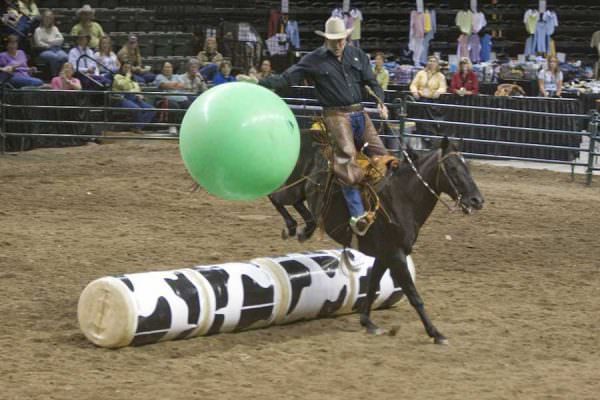
Education is Key
This will be a theme I harp on continuously so be prepared.
Education is not a flippant concept I talk about. I work every day at becoming more educated and fingers-crossed it will be a standard within the horse industry some day.
But today it's not.
Today, education in the horse industry, both formal and informal, is something extra on the side.
“But I've spent thousands of dollars on natural horsemanship clinics, training equipment and DVDs to become a better educated rider!”
That isn't education. What clinicians sell is a method, a formula.
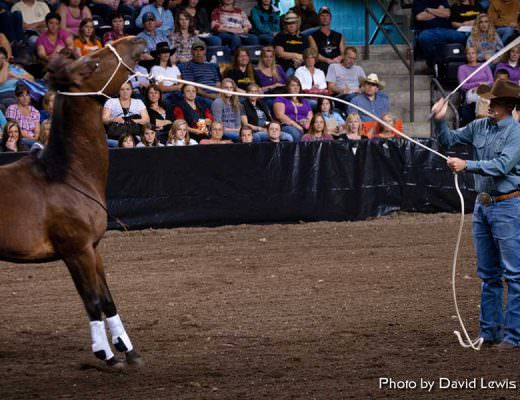
They tell you what to do in a specific situation with pre-determined variables to achieve an anticipated outcome. It's a paint-by-number project you're completing to call yourself an artist.
Many mistake this as education because it's a system used in the public school systems – rote memory and nothing more. Once you change a variable or introduce a new situation and the outcome becomes unexpected you have no more knowledge than a flea.
Real Educational Resources
What can you do then if you want to become more educated? Who do you listen to, read, follow?
First, don't limit yourself to learning only from within the horse industry. Learn about the world around you and you'll be surprised how much it teaches you about being an equestrian.
Education can come in many forms:
- Explanation
- Demonstration
- Collaboration
- Learning by teaching
The first two are most commonly used by trainers, instructors, and clinicians. They explain and demonstrate their methods, ideas, and beliefs.
But collaboration and learning by teaching are under-utilized.
One Social & Behavior Sciences research paper reports promising benefits of collaborative learning:
- Collaborative Learning develops social interaction skills (Cohen, B.P., Cohen, E.G.,
1991); - Collaborative Learning helps to develop learning communities within classes and institutions (Tinto, V., 1997);
- As students are actively involved in interacting with each other on a regular basis in an instructed mode, they are able to understand their differences and learn how to resolve social problems which may arise (Johnson, R.T. & Johnson, D.W., 1985);
- It creates a stronger social support system (Cohen, S., & Willis, T., 1985);
- Collaborative Learning builds more positive heterogeneous relationships (Webb, N.M., 1980) and encourages diversity understanding (Swing, S.R. & Peterson, P.L., 1982);
- Collaborative Learning promotes positive societal responses to problems and fosters a supportive environment within which to manage conflict resolution (Johnson, R.T., Johnson, D, W, 1990; Messick, D.M., & Mackie, D.M., 1989);
- In a Collaborative Learning setting, students develop responsibility for each other (Bonoma, J., Tedeschi, J., Helm, B., 1974);
- Higher level thinking skills are developed by Collaborative Learning (Webb, N.M., 1982);
- Students working together represent the most effective form of interaction. When students work in pairs one person is listening while the other partner is discussing the question under investigation. Both are developing valuable problem-solving skills by formulating their ideas, discussing them, receiving immediate feedback and responding to questions and comments (Johnson, D.W., 1971; Peterson, P.L. & Swing, S.R., 1985);
- When students work together the learning process becomes interesting and fun despite the repetitive nature of the learning process (Panitz, T., 1999);
- Collaborative Learning develops students' oral communication skills (Yager, S., Johnson, D.W. & Johnson, R.T., 1985);
- During the cooperative process, students can become involved in developing curriculum and class procedures (Kort, M.S., 1992);
- The high level of interaction and interdependence among group members leads to deep rather than surface learning (Entwistle, N. & Tait, H., 1993);
- Collaborative Learning is student-centered, leading to an emphasis on learning as well as teaching and to more student ownership of responsibility for that learning (Lowman, J., 1987);
- Collaborative Learning leads to self-management by students (Resnick, L.B., 1987);
- In a learning situation, student goal achievements are positively correlated; students perceive that they can reach learning goals if and only if the other students in the learning group also reach their goals. Thus, students seek outcomes that are beneficial to all those with whom they are cooperatively linked. When individuals get stuck they are more likely to give up, but groups are much more likely to find ways to keep going (Johnsons, 1990);
- Collaborative Learning reduces classroom anxiety created by new and unfamiliar situations faced by students (Kessler, R., Price, R. & Wortman, C., 1985).
I can think of many far-reaching benefits this could have within the horse industry as a whole, can't you?
Another way to use collaborative learning is with your horse. Would the morale of your training improve if you and your horse were collaborating to achieve an outcome instead of you dictating the whole process to your horse?

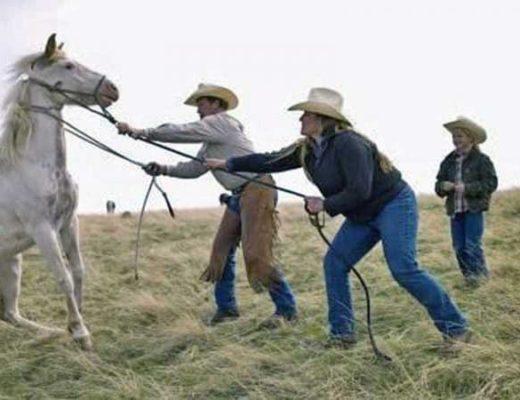
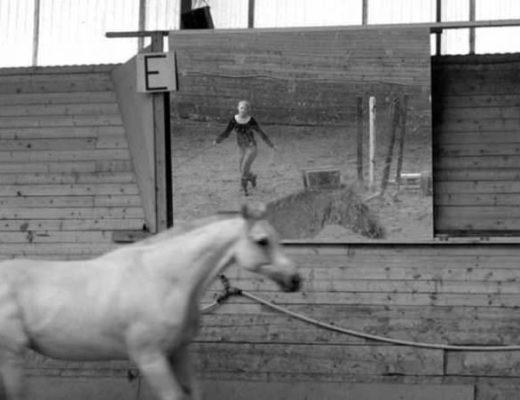
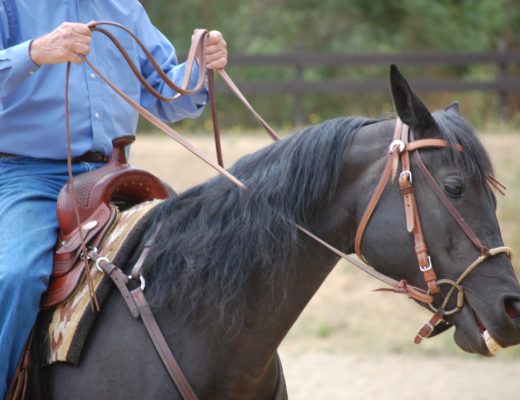
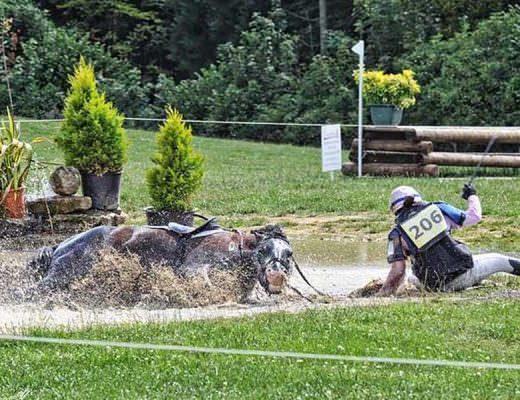
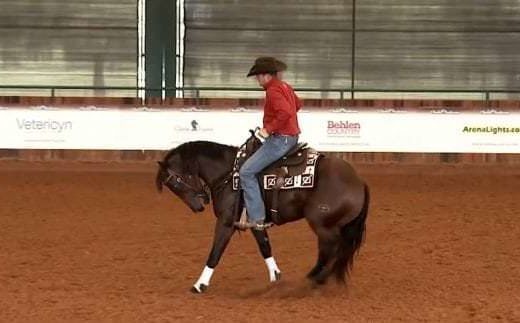
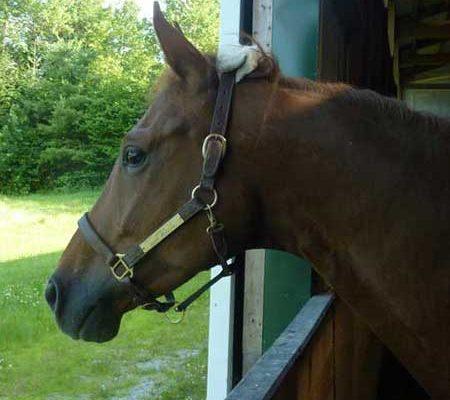
Sadly, most show horses are there to make money and anytime animals make money for humans, there will be abuse, since they are commodities.
I have found that people learn the most in relationship with someone more wise, horse people included. But recognizing truly good horsemen is difficult for the novice. My friend and I were searching for a good jumper trainer and watched her product (riders at the shows) and hired her when we saw the rider’s improving.
Very timely advice, for me. Thank you for putting into words a concept that has been dancing around the edges of my brain for some time (and throughout several clinics/trainers).
Knowledge/insight can be gained from EVERYwhere!
I think my best educators have been, in order of bestness 😉
the many horses that have come to live with me,
my horsical friends (others who are on a quest to find the best way with their horses)
the internet,
books,
clinics,
t.b.a.
I’d like to say I was surprised to read about your experience with that trainer, but sadly, I am not. I trained and taught professionally for over a decade before some health issues and a few other factors forced me into a less active occupation as a tack and feed store manager. One such case of willful ignorance that repeats itslef over and over on a regular basis in my store are the ladies who come in my store and request a bag of sweet feed (wet cob) and say, “this is the only thing my cushings/insulin resistant/laminitic horse will take his medicinee in!” I’ve long since given up trying to explain that even “a scoop” (whatever that is) of sweet feed is bad for their metabolically challenged horse. Though when I did still try and fight that battle, I was then usually told the same horse was also on all alfalfa and “only” got 3 carrots and a few peppermints a day. *Facepalm* I try to give help to those who seek it, but its a losing battle to explain a lot of things to a lot of people
Hi,
I found this article through an animal training professional I know. I am a dog trainer…this piece speaks so eloquently as to why it is so difficult to attain true humane training and understanding in our industry as well. It will be going in my bookmarks. Thank you.
Also (you can edit this if you would like…) it is ROTE learning, not Wrote. You may want to fix that..damn homonyms!
ha, Thanks Maggi. Homonyms and late-evening writing. 😉
Okay, I was reading and was agreeing with the concept generally about willful ignorance. There is plenty of abuse and neglect in the horse industry. Then I got to the part where the Clinton Anderson pic shows up. I can’t speak to the others. This one is intentionally being used out of context, capturing a moment, a fraction of second, when the horse put it’s head back, presumably when it was learning to deal with this experience for the first time. A common reaction and stance for a horse/prey animal. It is meant to look like the horse is being beaten or hit with stick or string. That is a lie. The exercise is to help the prey animal overcome fear of something that won’t actually hurt him and build confidence in the horse. It is not cruel, harsh or abusive. The animal does not suffer physically or psychologically, it is actually helped psychologically. Long term it helps keep human handlers safe and lets the horse be happier and confident. The picture is INTENTIONALLY set up to make it look like he is using the equipment to scare or abuse the horse. That’s NOT what is happening. The author’s purpose is to pull on the heart strings of those reading the article and create an emotional state in order to have the reader join the her personal campaign. It’s a psychological attack on the reader through their emotions. This picture is SOOOOO out of context and really another form of intentional ignorance. If the author knew what was going on, educated herself on how this exercise works and why it is so effective for both horse and human, she would not be able to point to it as supporting evidence of her theory. She proves herself a hypocrite and close minded herself. Or does she know? So many people choose human psychology and desires over the horse’s needs and wants. We don’t look at it from a scientific stance or learn about horse psychology which is so vastly different than our own. We anthropomorphize the horse, which is just a different form of abuse. These kinds of people, who propagate false or incorrect information, are just as damaging as actual the people who turn a blind eye to abuse in the horse industry.
I appreciate your opinion regarding Clinton Anderson. I have seen his work first-hand and am not of the same opinion of it as you are, it was for that reason I didn’t feel the image was out of context or unrelated to the article and included it.
That picture is not out of context – the simple fact such a moment occured, says it all. In positive training, such moments just don’t occur. They just – don’t. Can you please explain how did you come to the conclusion that the horse is not suffering? That this “training” is helping him? Because I don’t think he told you so, and all the other means to judge disstress in a horse are repeated measures of heart rate and stress hormones and observation of behavior (withdrawn eye, nostrils pulled back, mandible drawn back, inverted neck, high muscle tone, avoidant stance – all signs of distress, scientifically speaking). I am sorry, but you have just made another “willingly blind” example of yourself… Please, read new scientific evidence of how horses learn, what their cognitive abilities are, what is their emmotional life like, how they really live in the wild, how easy it is to distress them, and how detrimental it can be for them… And then you hopefully will see what the popular horsemen really do to horses – mostly cause distress, passivity, dullness and learned helplesness (which of course does not mean that these horses don’t “function” – yes, they are perfectly obedient – but at what costs…?)
I agree with LKM. I was surprised when I saw the picture of Clinton Anderson, especially the one chosen. I’ve seen him and studied him and feel he has a comprehensive guide to horse training. I see that the author frowns upon such a method, maybe because it works and keeps everyone safe. It’s not abusive, even for an untrained person the horse and the individual will most likely not get hurt physically or emotionally. I’ve been around the industry for years and I have seen a lot of abuse and ignorance from trainers and owners. Those that actually follow Clinton or other such trainers and use a method, a basis on which to learn, are trying something that in the end will work or at the very least do no harm. Some owners buy horses with no education and expect their trainers to give them all the answers, when in reality most trainers are there for the paycheck.
I agree with what the author is saying, I feel far too many people are being sold an educational programme, and far too many people get so invested in this that they can not see past this training programme, I disagree with this, the best way to learn about your horse is to spend time with them, watch them in the paddocks and how they behave with one another, this will teach you a whole lot. True Horsmanship is learnt from many different experiences and trainers/instructors, not just one method or clinic, it is lifelong pursuit and even the most experienced horseman have more they can learn. Most of the so called equine gurus, have a methodology that is based on older methodologies from various sources. I disagree strongly with this author’s use of the Clinton Anderson photograph, and she could be leaving herself open to legal action. It is not a flattering photo, and it has been deliberately taken out of context, and made to look like the trainer is subjecting the horse to harsh and cruel treatment, whereas in truth, the horse is learning something.
I had an intern come who had read a lot of different sources and been to clinics but she said they always talk in generalties-they never told her what to do. So tho I agree and have said the same thing about a number of methods that teach rote or formulas and have sort of black belt systems that supposedly mean you are now an expert after paying a certain amount of money to the guru-at some point you have to stick your neck out and Do something. And then with experience to learn what works and doesn’t work. and in what circumstances.You can learn from every source perhaps but philosophy despite all the wonderful insights isn’t going to help you get a foal to accept a halter. You gotta DO something and if that doesnt work, try something else, and keep trying til you get there. Horsemanship is a part of people hood. Who you are and become is certainly tied to what kind of horseman you are. But to say learning methods or formulas are wrong is as wrong as saying learning methods of teaching reading are wrong. Some work with some kids and some work with other kids. Its good to have a lot of methods in your toolbox and you never stop learning how to teach. And theres always that next horse or kid that stretches you to figure out how he learns. Perhaps it is better to delineate your boundaries as a teacher/trainer. Who you are and what is acceptable in your toolbox.
Your articles are so marvelous! It is hard to find scientifically oriented horse-people, and I love not only what you write about, but also how – that you include TEDtalks and scientific resources and you still manage to keep the tone friendly. I still have problem not to become outraged when I speak or write about people ignoring evidence of them violating horse welfare… You are inspiration, thank you. 🙂
Well written!!! Sadly, people think horses are like cookie cutters. If it works for one, it works for all. It’s a lazy mentality and people will learn that it’s not only incorrect, but down right wrong. I’m still on the fence about natural horsemanship/Parelli, but I have been watching my coach use some of these methods with a baby she has in from the track. The results were astonishing and fascinating–so, there you go—don’t dismiss anything. However, I don’t believe that it’s the only way to train, and neither does my coach. It’s about blending all the information you have to develop the right balance for the riders you teach, to the horses you train to the horses you ride/show. Sadly, many a professional is cutting corners to save money to make money. I have seen many but thankfully have not worked for them. It’s sad when the illusion of our sport and passion takes a hard crush into the land of reality. Mine was crushed when I was 17, at a show, and watched a woman from our barn beat her horse until he was bleeding, simply because he refused jumps on a muddy day at the show. We had a BNT, and he was judging. No one did ANYTHING until he finally shouted at her to STOP. I was already on my way over to stop her, even though I was taught to respect my elders—I couldn’t let this go. Thankfully someone else stepped in, but it felt like 10 mins had passed. Perhaps everyone was shocked too? Needless to say, she never returned and the horse was sold to someone else. A loving owner who gave him love and understanding. I remember seeing the older girls/more advanced riders tending the weals made by her crop. I was disgusted and close to tears. My dream world of ‘everyone loves horses’ was shattered that day, but it inspired me to continue on in the industry with a vow that any horse I worked with would never, EVER be treated that way. And 35 yrs later, I’ve held up to that vow. 🙂
My main aim is to make the riders safe for the horses, not the horses safe for the riders.